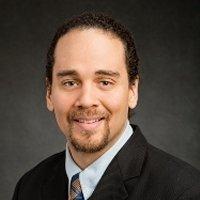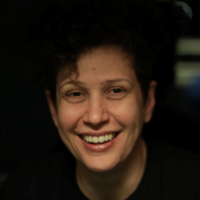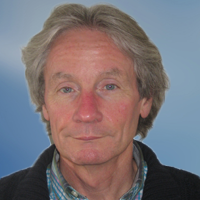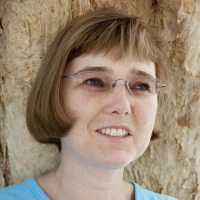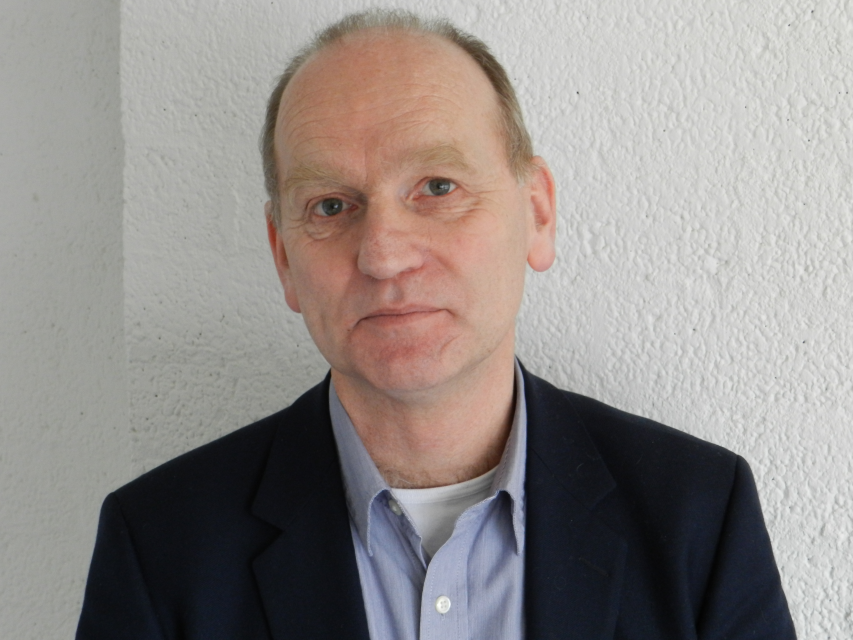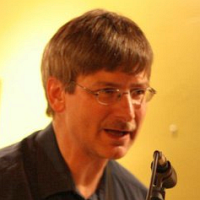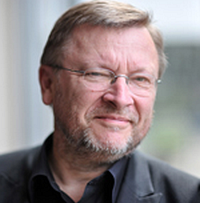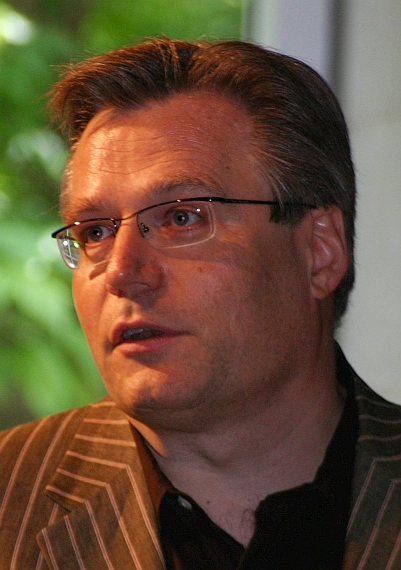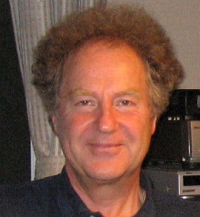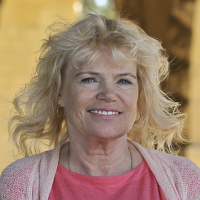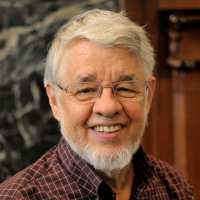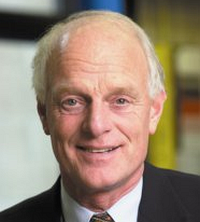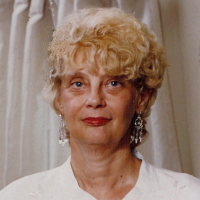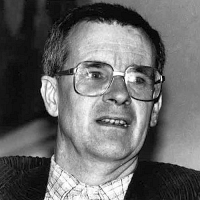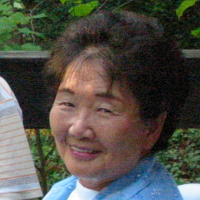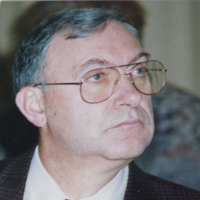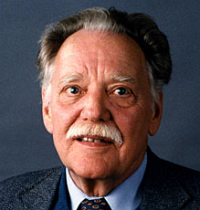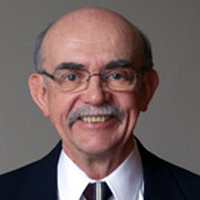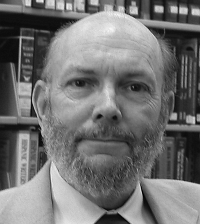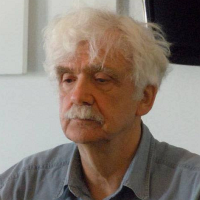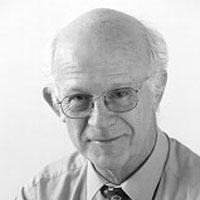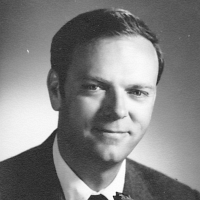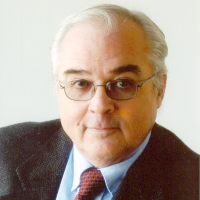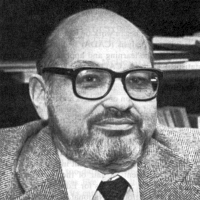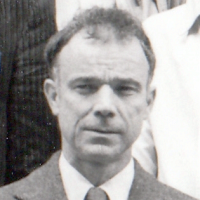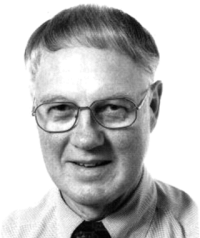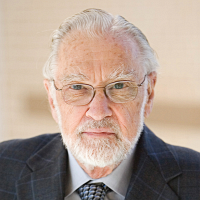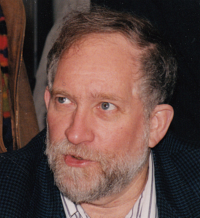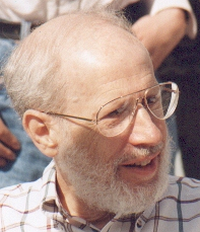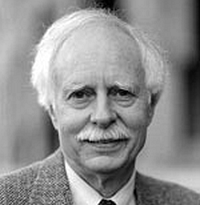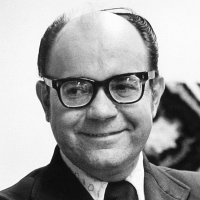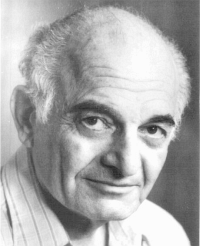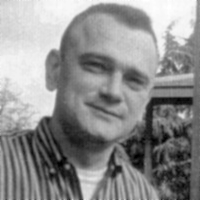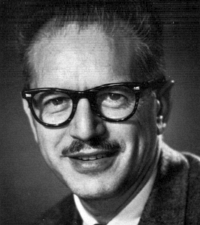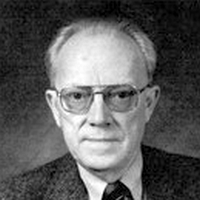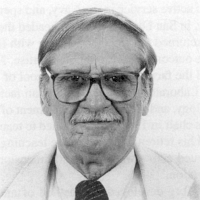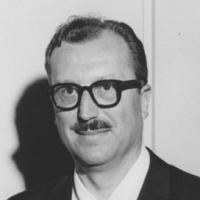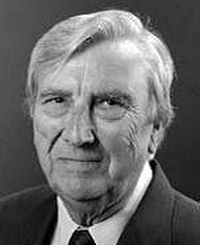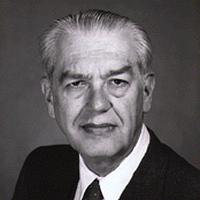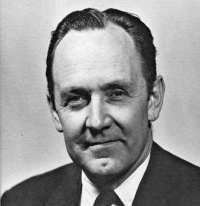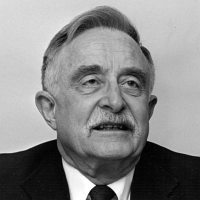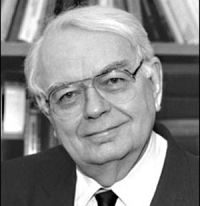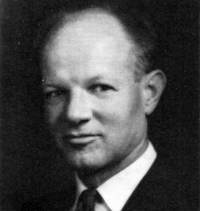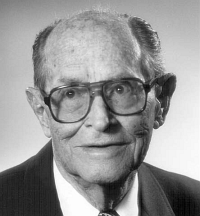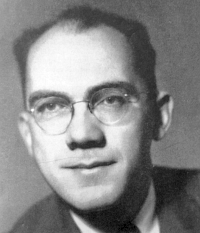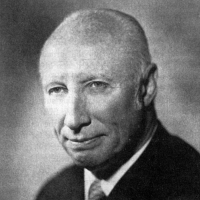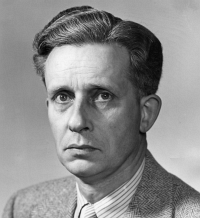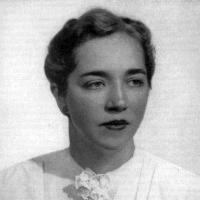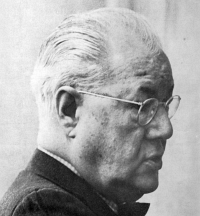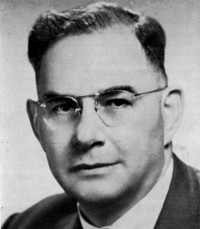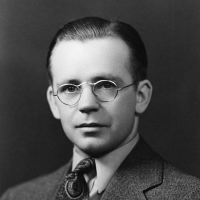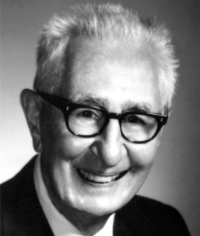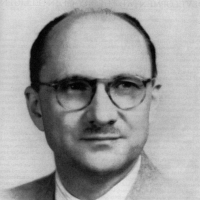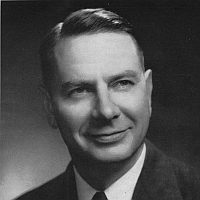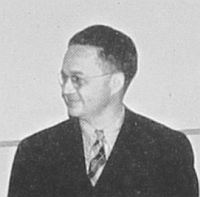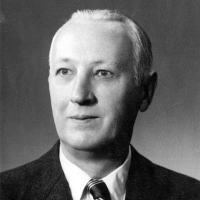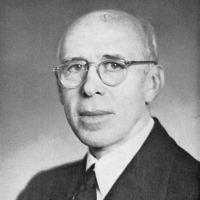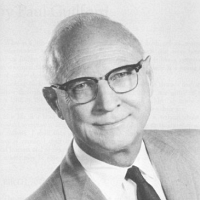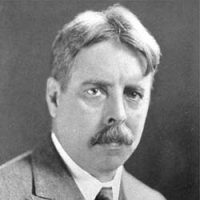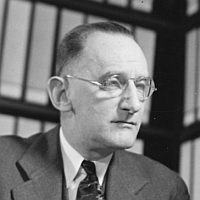Past, Present, and Incoming Presidents
| Term | Name | Institution and Presidential Address |
|---|---|---|
| 2026-27 |
Jimmy de la Torre |
The University of Hong Kong TBD |
| 2025-26 |
Steven Culpepper |
University of Illinois at Urbana-Champaign TBD |
| 2024-25 |
Denny Borsboom |
University of Amsterdam Psychometric models and psychological theories |
| 2023-24 |
David Kaplan |
University of Wisconsin – Madison Probabilistic forecasting with International large-scale assessments: Methods for estimating the pace of progress to the UN education sustainable development targets |
| 2022-23 |
Jeff Douglas |
University of Illinois at Urbana-Champaign Some dichotomies in restricted latent class models for diagnostic classification |
| 2021-22 |
Irini Moustaki |
London School of Economics Estimation methods for simple and complex psychometric models |
| 2019-21 |
Dan Bolt |
University of Wisconsin – Madison Item Complexity: A Neglected Psychometric Feature of Test Items? |
| 2018-19 |
Francis Tuerlinckx |
KU Leuven, Belgium Things I have learnt so far |
| 2017-18 |
Cees Glas |
University of Twente, The Netherlands Psychometric tools for practical problems in educational measurement |
| 2016-17 |
Anders Skrondal |
Norwegian Institute of Public Health, Oslo, Norway The role of conditional likelihoods in latent variable modeling |
| 2015-16 |
Terry Ackerman |
University of North Carolina at Greensboro, USA Differential item functioning from a multidimensional item response theory perspective |
| 2014-15 |
Sophia Rabe-Hesketh |
University of California – Berkeley, USA Ignoring nonignorable missingness |
| 2013-14 |
Alberto Maydeu-Olivares |
University of Barcelona, Spain Assessing the size of model misfit in structural equation models |
| 2012-13 |
Hua-Hua Chang |
University of Illinois at Urbana-Champaign, USA |
| 2011-12 |
Mark Wilson |
University of California – Berkeley, USA Seeking a Balance Between the Statistical and Scientific Elements in Psychometrics |
| 2010-11 |
Klaas Sijtsma |
Tillburg University, The Netherlands Future of Psychometrics: Ask What Psychometrics Can Do for Psychology |
| 2009-10 |
Jos ten Berge |
University of Groningen, The Netherlands Simplicity and Typical Rank Results for Three-Way Arrays |
| 2008-09 |
Brian Junker |
Carnegie Mellon University, USA Some New Connections for Nonparametric Item Response Modeling |
| 2007-08 |
Paul De Boeck |
KU Leuven, Belgium Random Item IRT Models |
| 2006-07 |
Roger S. Millsap |
Arizona State University, USA Invariance in Measurement and Prediction Revisited |
| 2005-06 |
Ulf Boeckenholt |
McGill University, Canada Thurstonian-Based Analyses: Past, Present and Future Utilities |
| 2004-05 |
Robert Cudeck |
University of Minnesota, USA Fitting Psychometric Models Using Gradient Methods and Automatic Derivatives |
| 2003-04 |
Willem J. Heiser |
Leiden University, The Netherlands Geometric Representation of Association Between Categories |
| 2002-03 |
Jacqueline J. Meulman |
Leiden University, The Netherlands Prediction and Classification in Nonlinear Data Analysis: Something Old, Something New, Something Borrowed, Something Blue |
| 2001-02 |
William Stout |
University Of Illinois & Educational Testing Service, USA Psychometrics: From Practice To Theory And Back: 15 Years of Nonparametric Multidimensional IRT, DIF/Test Equity, and Skills Diagnostic Assessment |
| 2000-01 |
David Thissen |
University of North Carolina at Chapel Hill, USA Psychometric Engineering as Art |
| 1999-00 |
Wim J. van der Linden |
University of Twente, The Netherlands A Test-Theoretic Approach to Observed-Score Equating |
| 1998-99 |
Susan E. Embretson |
University of Kansas, USA Generating Items During Testing: Psychometric Issues and Models |
| 1997-98 |
Ivo W. Molenaar |
University of Groningen, the Netherlands Data, Model, Conclusion, Doing it Again |
| 1996-97 |
Fumiko Samejima |
The University of Tennessee, Knoxville, USA Departure from Normal Assumptions: A Promise for Future Psychometrics with Substantive Mathematical Modeling |
| 1995-96 |
Shizuhiko Nishisato |
Ontario Institute for Studies in Education & The University of Toronto, Canada Gleaning in the Field of Dual Scaling |
| 1994-95 |
Gerhard H. Fischer |
University of Vienna, Austria Some Neglected Problems in IRT |
| 1993-94 |
Robert J. Mislevy |
Educational Testing Service, USA Evidence and Inference in Educational Assessment |
| 1992-93 |
William Meredith |
University of California – Berkeley, USA Measurement Invariance, Factor Analysis and Factorial Invariance |
| 1991-92 |
Michael W. Browne |
The Ohio State University, USA Circumplex Models for Correlation Matrices |
| 1990-91 |
Phipps Arabie |
Rutgers University, USA Was Euclid an Unnecessarily Sophisticated Psychologist? |
| 1989-90 |
Paul W. Holland |
Educational Testing Service, USA On the Sampling Theory Foundations of Item Response Theory Models |
| 1988-89 |
Bengt O. Muthén |
University of California, Los Angeles, USA Latent Variable Modeling in Heterogeneous Populations |
| 1987-88 |
Jan de Leeuw |
University of California, Los Angeles, USA Multivariate Analysis with Linearizable Regressions |
| 1986-87 |
Yoshio Takane |
McGill University, Canada Analysis of Contingency Tables by Ideal Point Discriminant Analysis |
| 1985-86 |
Roderick P. McDonald |
Macquarie University, Australia Describing the Elephant: Structure and Function in Multivariate Data |
| 1984-85 |
Bruce Bloxom |
Vanderbilt University, USA Considerations in Psychometric Modeling of Response Time |
| 1983-84 |
Lawrence J. Hubert |
University of California, Santa Barbara, USA Statistical Applications of Linear Assignment |
| 1982-83 |
Peter M. Bentler |
University of California, Los Angeles, USA Some Contributions to Efficient Statistics in Structural Models: Specification and Estimation of Moment Structures |
| 1981-82 |
James O. Ramsay |
McGill University, Canada When the Data are Functions |
| 1980-81 |
Forrest W. Young |
University of North Carolina at Chapel Hill, USA Quantitative Analysis of Qualitative Data |
| 1979-80 |
Melvin R. Novick |
The University of Iowa, USA Statistics as Psychometrics |
| 1978-79 |
Norman Cliff |
University of Southern California, Los Angeles, USA Test Theory Without True Scores? |
| 1977-78 |
Karl G. Jöreskog |
University of Uppsala, Sweden Structural Analysis of Covariance and Correlation Matrices |
| 1976-77 |
R. Duncan Luce |
Harvard University, USA Thurstone’s Discriminal Processes Fifty Years Later |
| 1975-76 |
J. Douglas Carroll |
Bell Laboratories, USA Spatial, Non-Spatial and Hybrid Models for Scaling |
| 1974-75 |
Joseph B. Kruskal |
Bell Telephone Laboratories, USA Some Advances in Parametric Mapping |
| 1973-74 |
Roger N. Shepard |
Stanford University, USA Representation of Structure in Similarity Data: Problems and Prospects |
| 1972-73 |
R. Darrell Bock |
University of Chicago, USA Word and image: Sources of the Verbal and Spatial Factors in Mental Test Scores |
| 1971-72 |
Samuel J. Messick |
Educational Testing Service, USA Beyond Structure: In Search of Functional Models of Psychological Process |
| 1970-71 |
Louis Guttman |
Hebrew University and Israel Institute of Applied Social Research, Israel |
| 1969-70 |
Henry F. Kaiser |
University of California – Berkeley, USA A Second Generation Little Jiffy |
| 1968-69 |
Harry H. Harman |
Educational Testing Service, USA Retrospective Anticipation |
| 1967-68 |
B. J. Winer |
Purdue University, USA The Error |
| 1966-67 |
Chester W. Harris |
University of Wisconsin – Madison, USA On Factors and Factor Scores |
| 1965-66 |
Bert F. Green, Jr. |
Carnegie Institute of Technology, USA The Computer Revolution in Psychometrics |
| 1964-65 |
Warren S. Torgerson |
The Johns Hopkins University, USA Multidimensional Scaling of Similarity |
| 1963-64 |
Allen L. Edwards |
University of Washington, USA Social Desirability and Performance on the MMPI |
| 1962-63 |
Lyle V. Jones |
University of North Carolina at Chapel Hill, USA Beyond Babbage |
| 1961-62 |
Philip H. Dubois |
Washington University, St. Louis, USA On Relationships Between Numbers and Behavior |
| 1960-61 |
John B. Carroll |
Harvard University, USA The Nature of the Data, or How to Choose a Correlation Coefficient |
| 1959-60 |
Lloyd G. Humphreys |
University of Illinois at Urbana-Champaign, USA Investigations of the Simplex |
| 1958-59 |
Frederic M. Lord |
Educational Testing Service, USA An Approach to Mental Test Theory |
| 1957-58 |
Frederick Mosteller |
Harvard University, USA The Mystery of the Missing Corpus |
| 1956-57 |
Hubert E. Brogden |
The Adjutant General’s Office, USA New Problems for Old Solutions |
| 1955-56 |
Clyde H. Coombs |
University of Michigan, USA The Scale Grid: Some Interrelations of Data Models |
| 1954-55 |
Ledyard R. Tucker |
Princeton University and Educational Testing Service, USA Psychometric Theory: General and Specific |
| 1953-54 |
Lee J. Cronbach |
University of Illinois at Urbana-Champaign, USA Report on a Psychometric Mission to Clinicia |
| 1952-53 |
Robert L. Thorndike |
Columbia University, USA Who Belongs in the Family? |
| 1951-52 |
John C. Flanagan |
University of Pittsburgh, USA Methodology in Psychology |
| 1950-51 |
Quinn McNemar |
Stanford University, USA The Factors in Factoring Behavior |
| 1949-50 |
Dorothy C. Adkins |
University of North Carolina at Chapel Hill, USA A Superior Rotational Method in Factor Analysis or Psychometricians in Government Service |
| 1948-49 |
Phillip Justin Rulon |
Harvard University, USA Matrix Representation of Models for the Analysis of Variance and Covariance |
| 1947-48 |
Irving Lorge |
Columbia University, USA
|
| 1946-47 |
Harold A. Edgerton |
The Ohio State University, USA |
| 1945-46 |
Edward E. Cureton |
Richardson, Bellows, Henry & Co., Inc., USA |
| 1944-45 |
Harold Gulliksen |
University of Chicago, USA |
| 1943-44 |
Henry E. Garrett |
Columbia University, USA |
| 1941-43 |
Paul Horst |
Proctor & Gamble, USA The Twilight of Rugged Individualism in Quantitative Psychology |
| 1940-41 |
Jack W. Dunlap |
University of Rochester, USA |
| 1939-40 |
Karl J. Holzinger |
University of Chicago, USA |
| 1938-39 |
Truman L. Kelley |
Harvard University, USA |
| 1937-38 |
J. P. Guilford |
University of Nebraska, USA |
| 1936-37 |
E. L. Thorndike |
Columbia University, USA |
| 1935-36 |
L. L. Thurstone |
University of Chicago, USA Psychology as a Quantitative Rational Science (full paper) |



